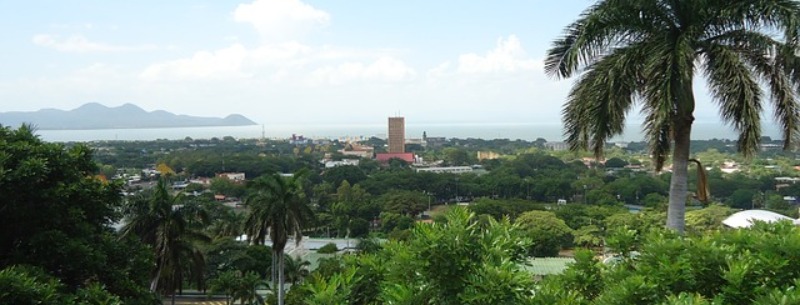Managua, capital city of Nicaragua
Sultry and seismic, Managua is the nerve center and capital of Nicaragua. Known as both the “city of Peace” and the “Daughter of War”, the capital is home to more than 1.4 million people, cosmopolitan charms, tree-lined boulevards, and a volcanic skyline. The city pulses around you, offering excellent restaurants, rich cultural heritage, and great nightlife.
There are a number of outstanding museums in the city, and the Palacio Nacional de la Cultura is one of the best. The collection’s timeline dates back 500 million years to the formation of the volcanoes and lakes that dot the Nicaraguan landscape before detailing pre-Columbian statuary with one of the country’s best collections of pottery. Other exhibits highlight the Spanish colonial period and the Sandino and Sandinista eras. One large gallery covers nearly 500 years of regional art. The small admission price includes a 30-minute guided tour, but it is only available in Spanish.
One of the most intriguing sites in Managua is the Footprints of Acahualinca, fossilized tracks discovered in 1874. The tracks are evidence of the passage of a group of people who crossed the shores of Lago de Managua over 6,000 years ago. The on-site museum presents artifacts from the excavation, including ceramics and human skulls.
The most recognizable landmark in the city is the statue of Sandino that stands at his site of execution at the Parque Historico Nacional Loma de Tiscapa. Visitors to the historic park can also walk past the relics of one of the country’s most notorious prisons and see a memorial to the revolutionaries killed during the war. Hike to the top of the hill to catch some of the most incredible views of the city and the Volcan Momotombo.
Another iconic landmark in Managua is the Monumento a Rubén Darío. Erected in 1933, the original statue was soon covered with graffiti and fell into disrepair, but it was refurbished in 1998 due to community pressure. The statue of Nicaragua’s favorite son is near the lake by the Plaza de la República, and it remains a symbol of the country.
The city streets can sometimes be overwhelming, but the Arboretum Nacional offers peaceful respite. Opened in 1990, the arboretum is home to over 200 species of plants. The best exhibits focus on the central lowlands and dry tropical forest ecosystems, and other highlights include the sacuanjoche, the national flower, and the madrono, the national tree.
1972 shattered many of Managua’s most beautiful and historic buildings, but the ruins of many remain still unrestored. One such hollow shell is the Old Cathedral. Dappled in golden light and watched over by stone angels, the cathedral is serene and beautiful but also a painful reminder of the devastation of the earthquake.
The Nueva Catedral will never meet the same fate as the Old Cathedral. The architectural marvel sits next to a fault line but was designed to be earthquake-proof. The site’s 63 cupolas represent each of the Catholic churches in the country, and the cool interior is worth an afternoon of exploration.
Although the Lago de Managua is now one of Central America’s most polluted bodies of water, the lake is still a popular destination for families and party-goers, especially on the weekends. They come not to swim but instead to revel in the quirky seaside kiosks and enjoy the thrills of the theme park rides at the lake’s west end.
Managua Geographical Location
Managua faces Lake Managua in the western region of Nicaragua. It is Nicaragua’s largest city with approximately 2,410,000 inhabitants.
Managua Language
Spanish is the official language of Nicaragua although English and indigenous languages are also found along the Atlantic Coast.
Managua Predominant Religion
- 58.5% Roman Catholic
- 21.5% Evangelical
- 1.5% Moravian
- 1% Jehovah’s Witness
- 1.5% Other
- 16% None
Nicaragua has no official religion and religious tolerance is highly promoted by the Nicaraguan government.
Managua Currency
The Cordoba is the official currency of Nicaragua.
Managua Climate
Managua has a tropical climate with hot temperatures throughout the year. May through October are the wettest months while January through April experience hardly any rain at all.
Managua Main Attractions
- The New Cathedral of Managua
- The Market
- The National Palace of Culture
Other Attraction in Managua
- Lagunda de Tiscapa
- La Loma Sandino Statue
- Central Park Monument of Santos Lopez
- Plaza de la Fe
